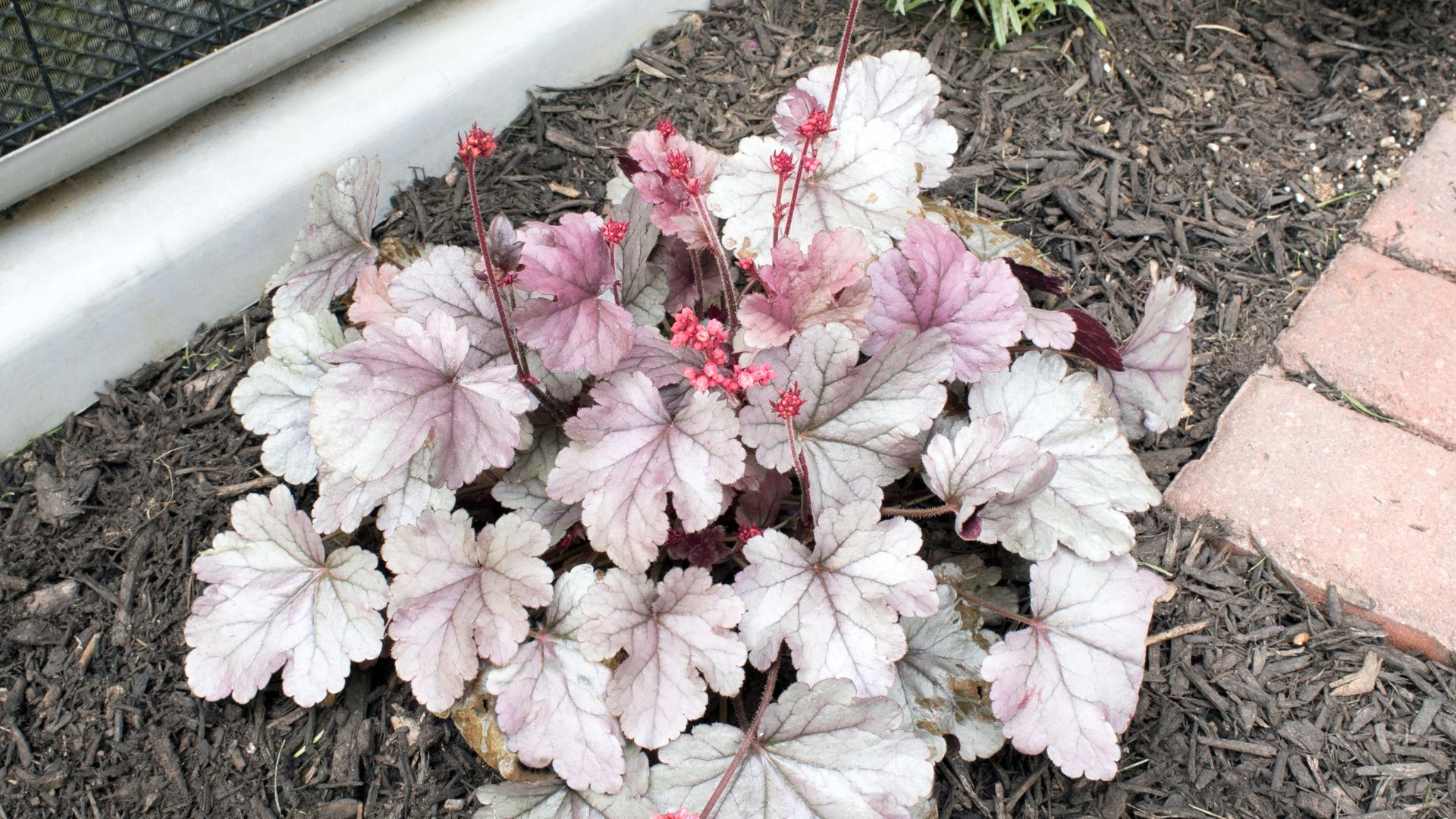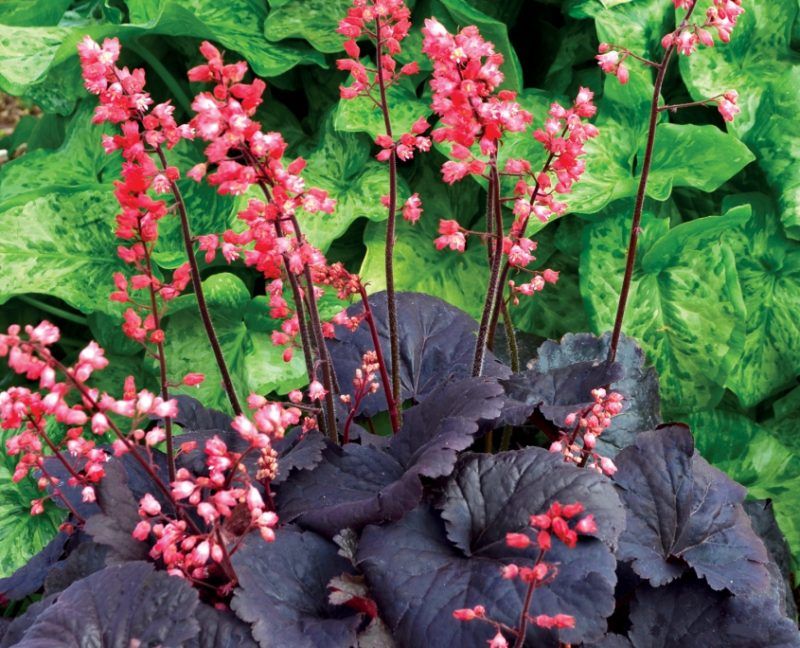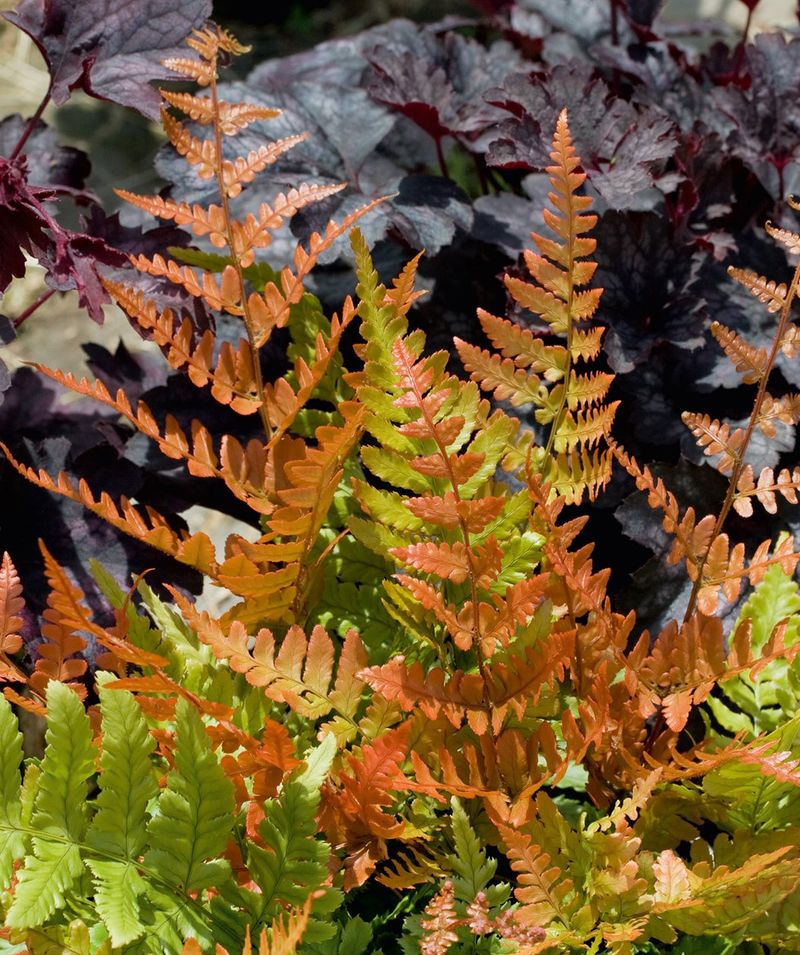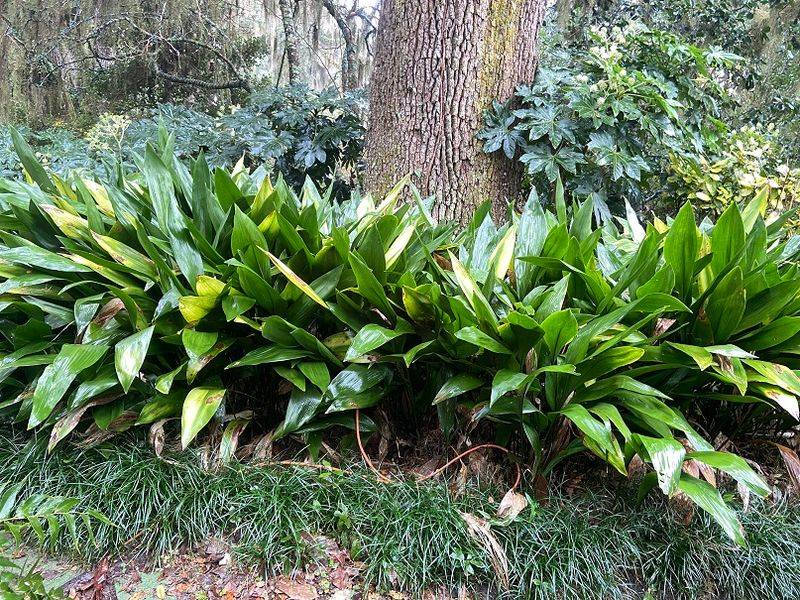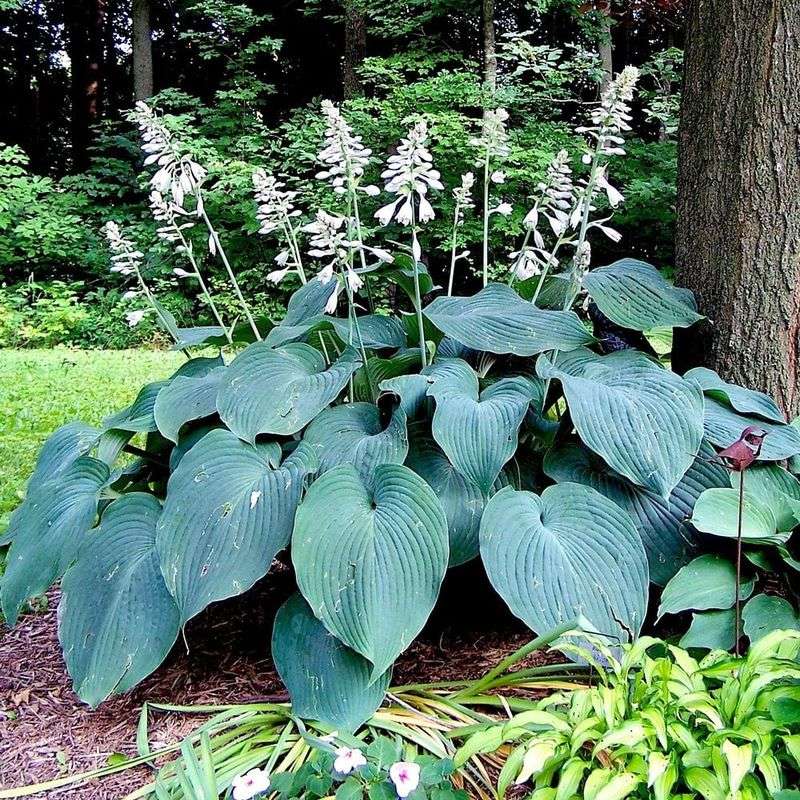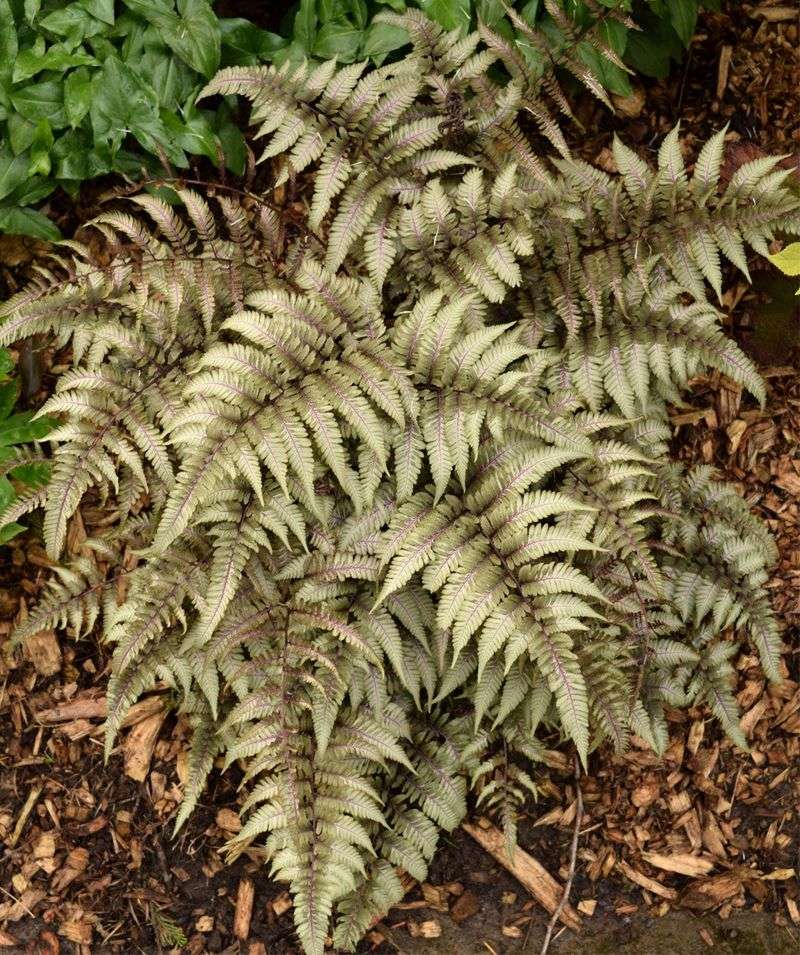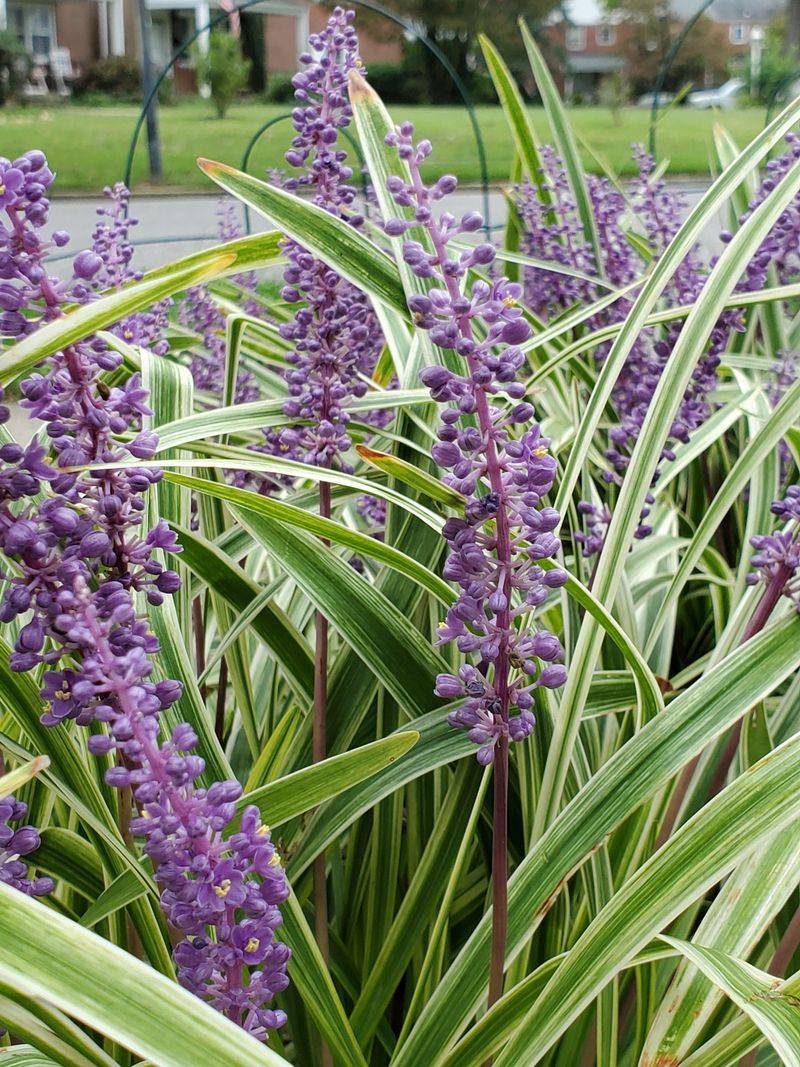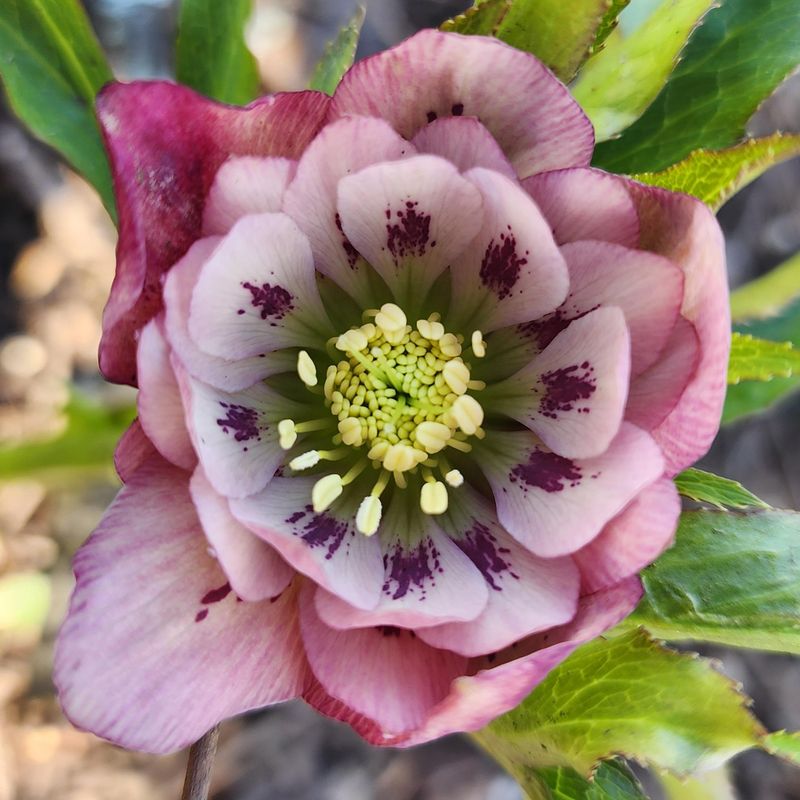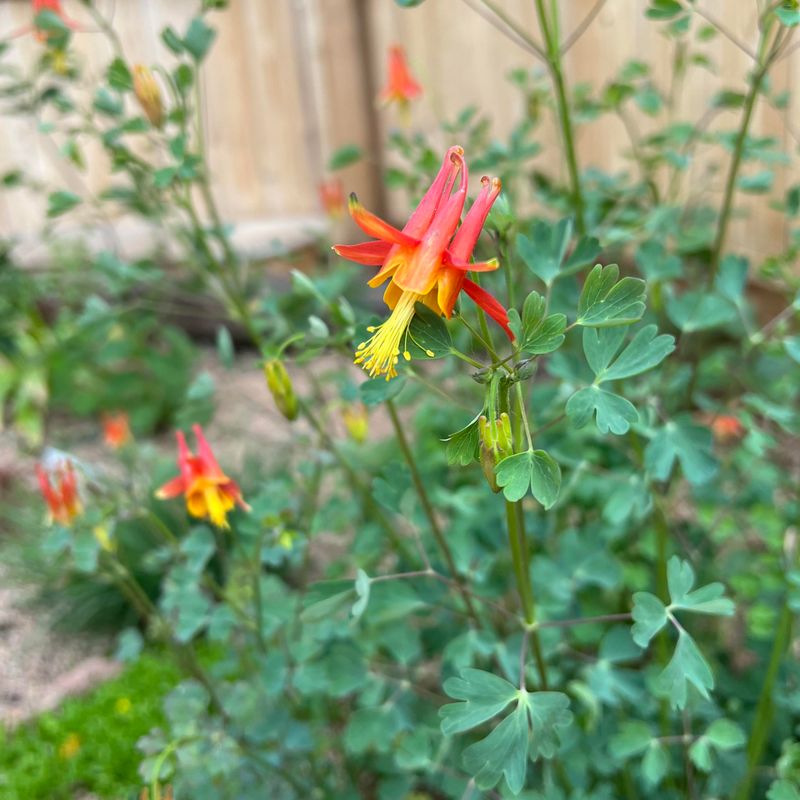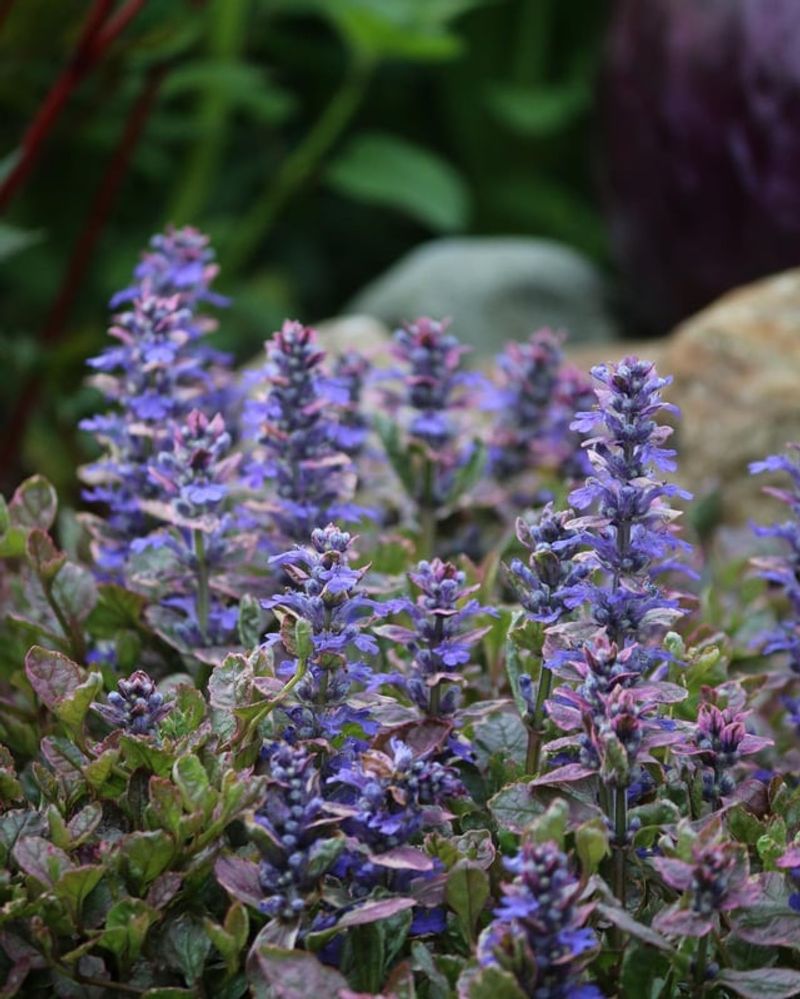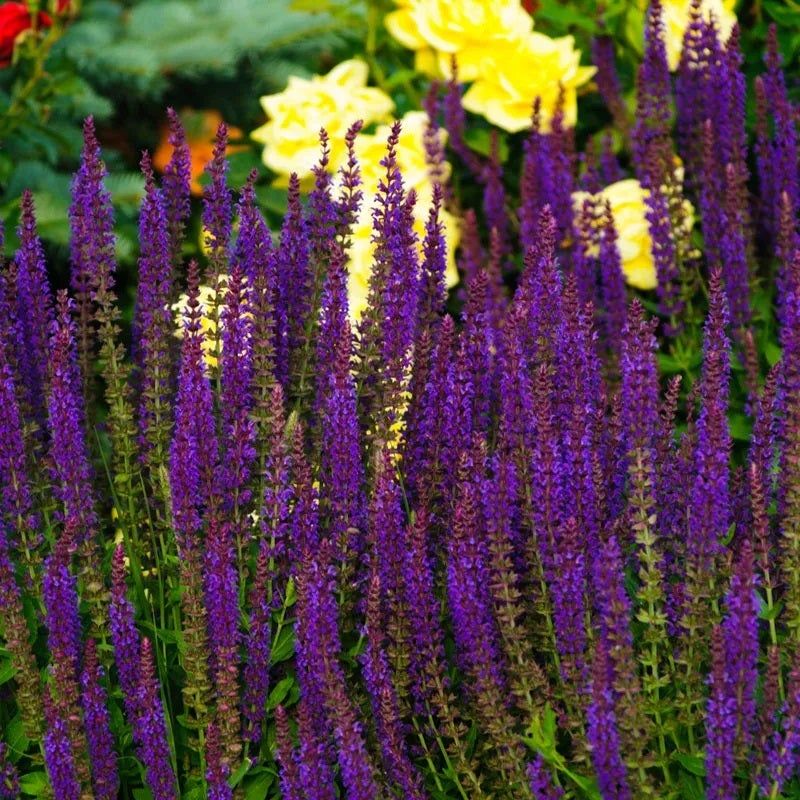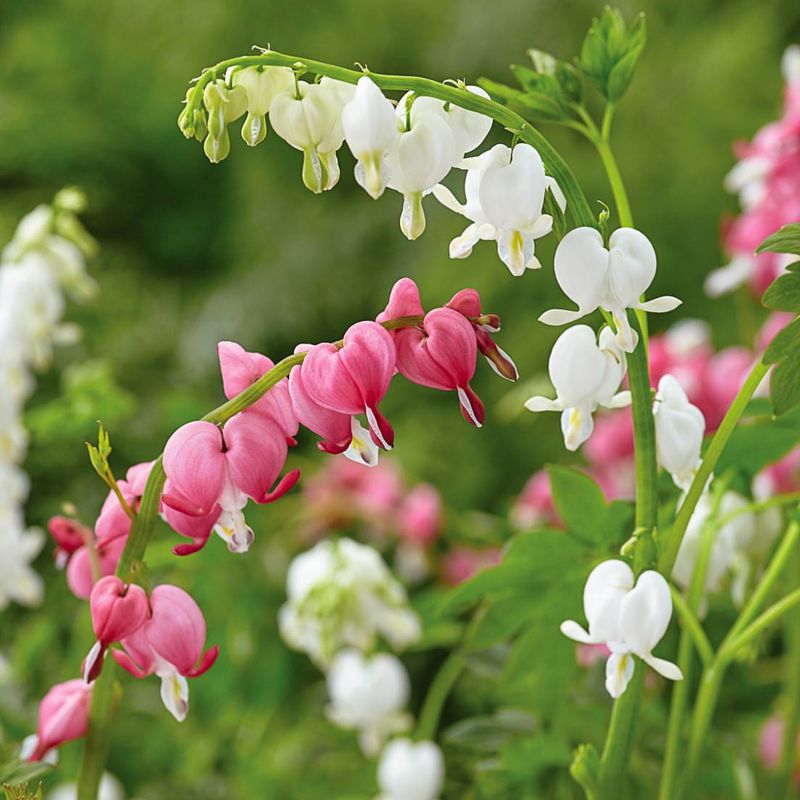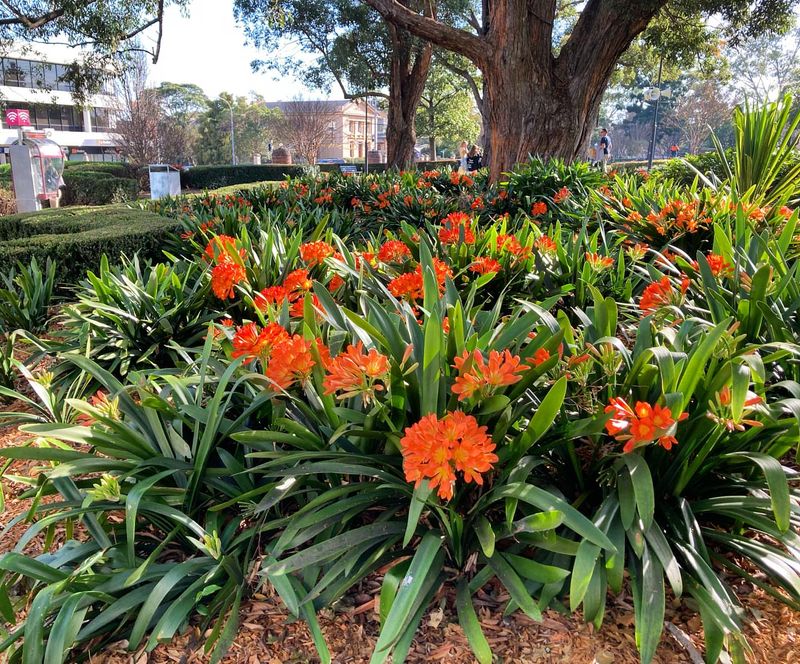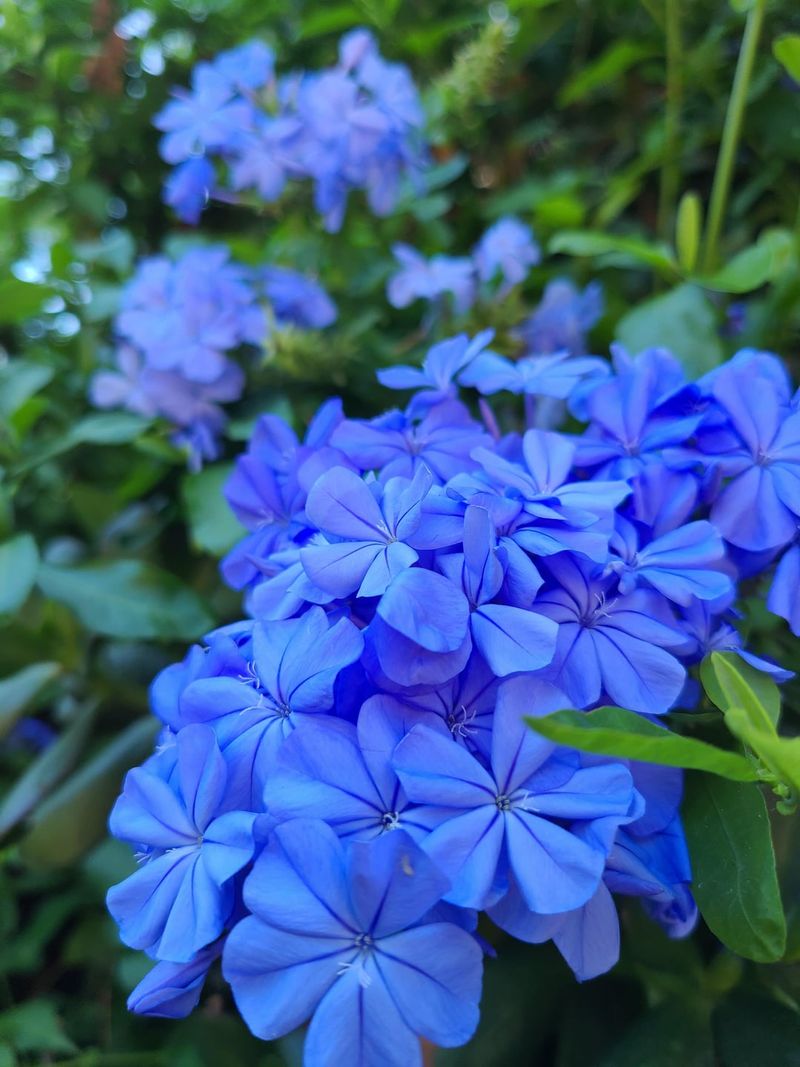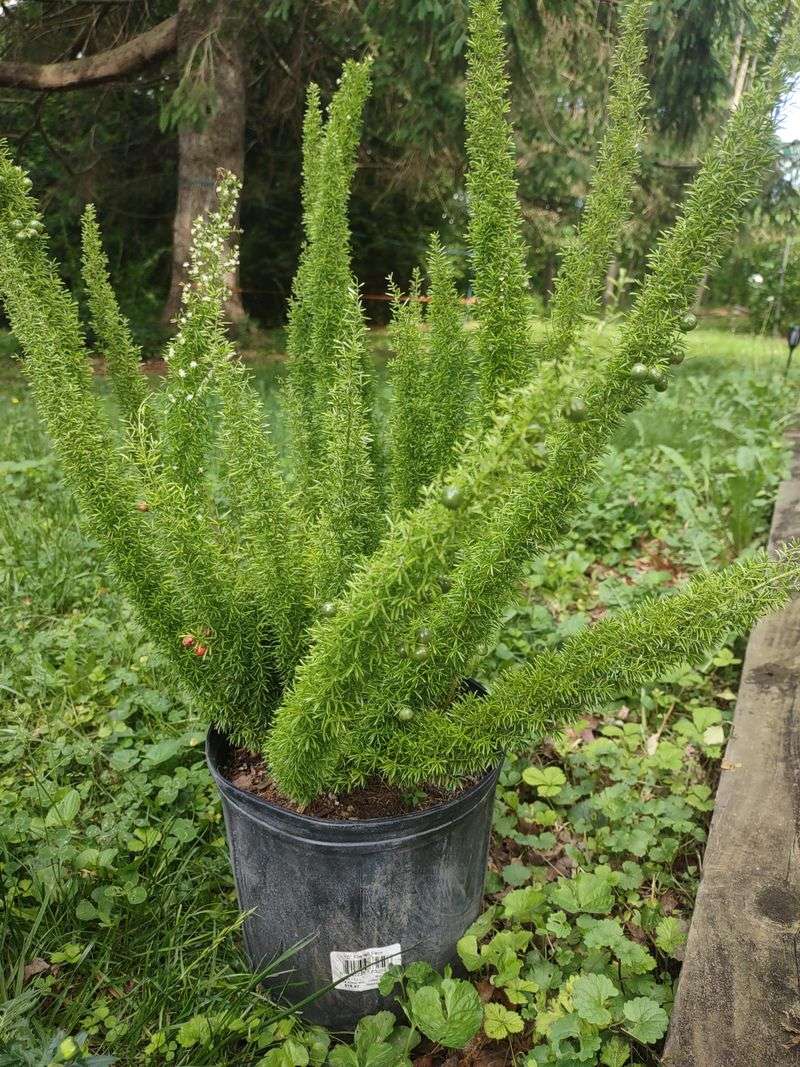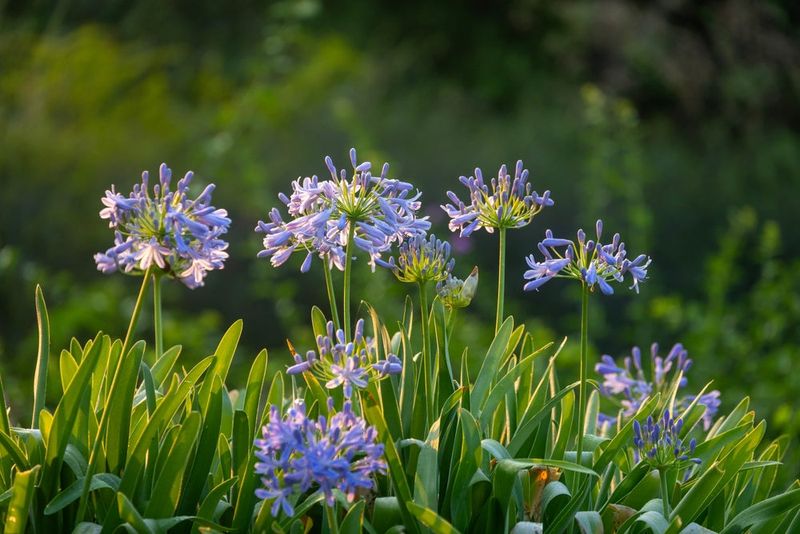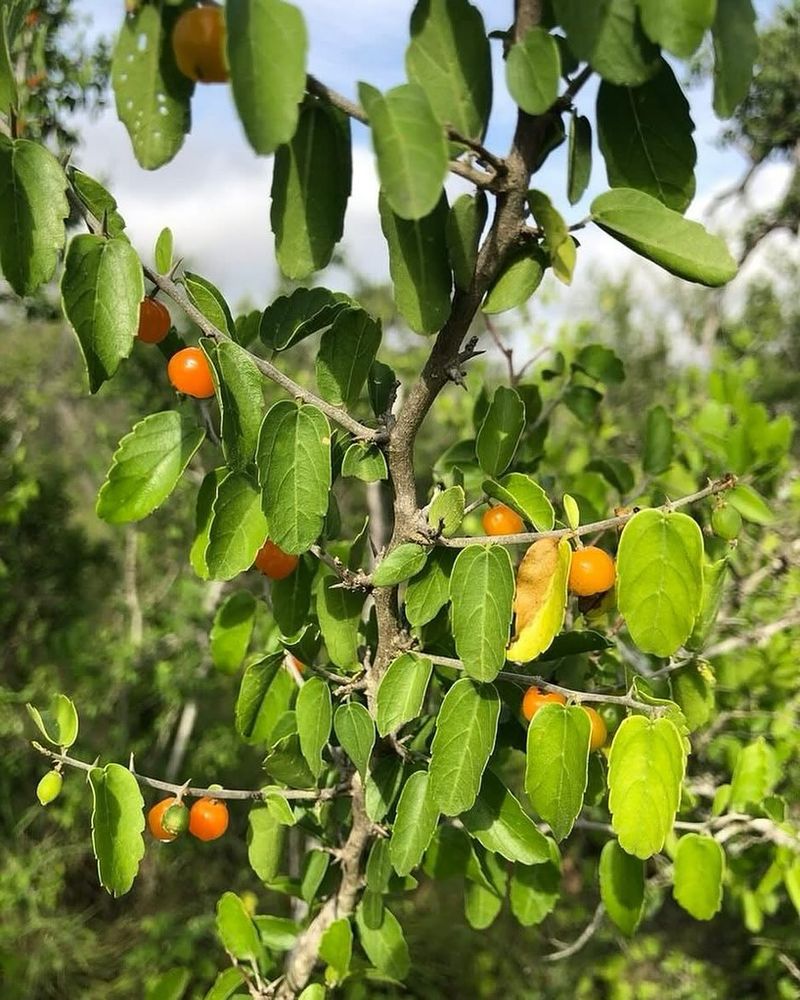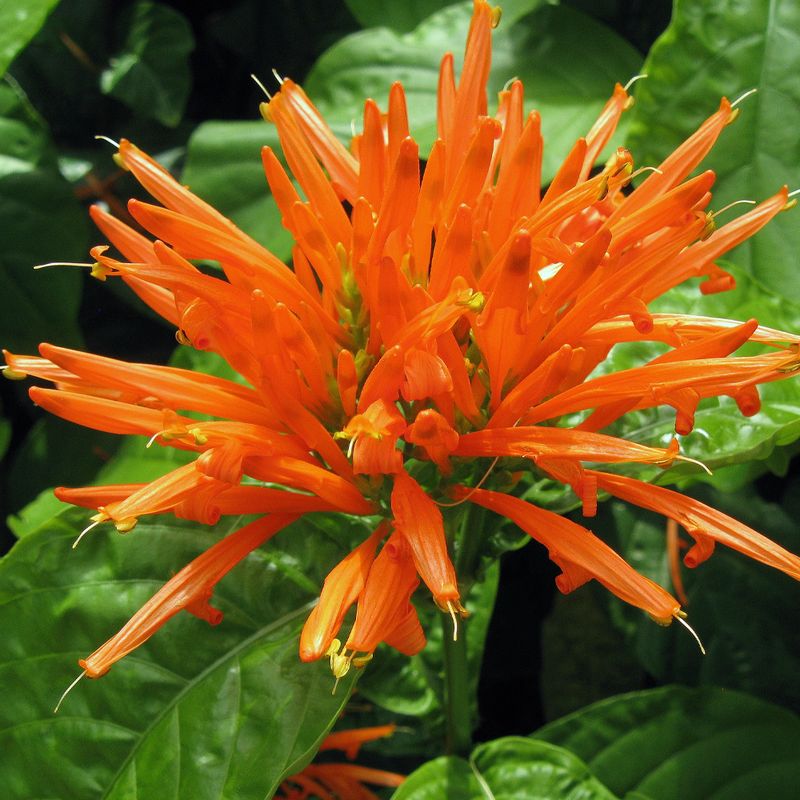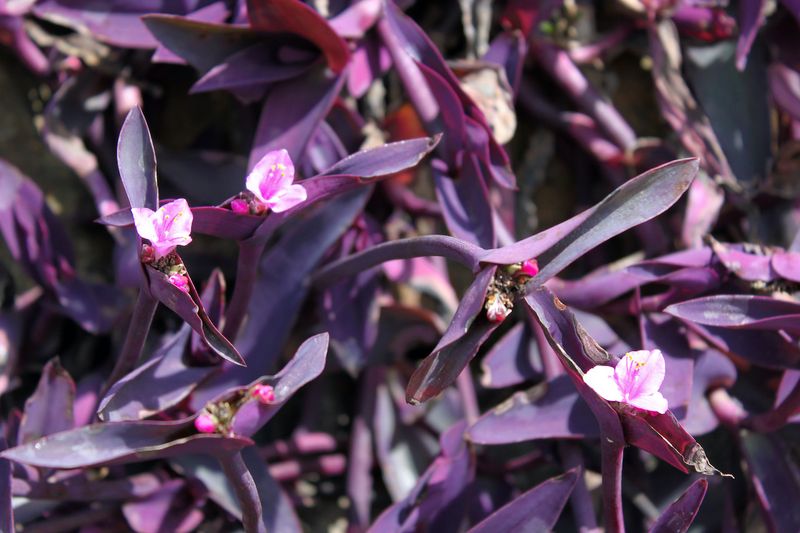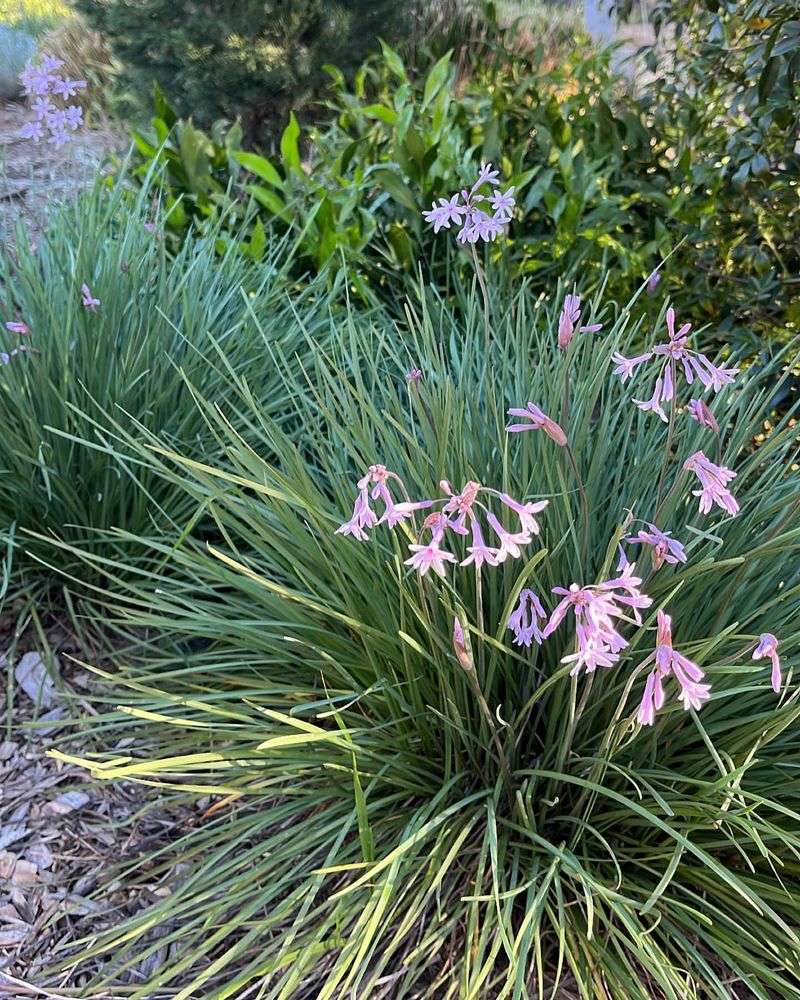Arizona’s desert heat is no joke—plants need to be tough and adaptable to thrive here. Perennials that can handle both shade and sun bursts are your best allies, especially when placed with a bit of strategy and care. Look for heat-tolerant options like lantana, red yucca, or globe mallow.
These desert natives laugh in the face of triple-digit temps and bounce back fast after brief exposure to sun in shaded areas. Placement is key: give them dappled light or morning sun with afternoon cover.
With smart planning and the right mix, your garden can look vibrant all year—even in the heart of a desert summer. These perennials aren’t just survivors—they’re the secret to turning harsh into harmonious.
1. Coral Bells (Heuchera)
Stunning foliage in purples, silvers, and greens makes these beauties stand out even without flowers. They prefer morning sun with afternoon protection in Arizona gardens.
Planting them under deciduous trees works wonders, providing winter sun when the trees drop their leaves. Their shallow roots mean they need consistent moisture, especially during summer.
I’ve had great success with ‘Palace Purple’ variety along my east-facing wall where they receive filtered light through a mesquite tree.
2. Autumn Fern (Dryopteris erythrosora)
New fronds emerge with a coppery-red hue that gradually turns deep green, creating visual interest throughout the seasons. Despite Arizona’s dry climate, these ferns thrive when planted in sheltered locations.
Morning light with protection from harsh afternoon rays works best. Add plenty of organic matter to the soil and maintain consistent moisture.
My north-facing courtyard hosts several of these beauties that have survived five summers with minimal attention beyond regular watering.
3. Cast Iron Plant (Aspidistra elatior)
Living up to its name, this tough-as-nails perennial handles neglect like a champion. Dark green, strappy leaves create a tropical feel even in Arizona’s dry environment.
Place it in areas that receive almost no direct sunlight, such as north-facing walls or under dense tree canopies. Slow-growing but incredibly long-lived, it rarely needs division.
During record-breaking heat waves, mine barely showed stress while other shade plants wilted – truly earning its reputation for indestructibility.
4. Hosta ‘Blue Angel’
Contrary to popular belief, certain hostas can survive in Arizona when given proper care. This blue-gray variety shows impressive heat tolerance compared to other hostas.
Morning sun with dense afternoon shade creates ideal conditions. Plant them where walls or larger plants block the western exposure completely. Extra mulch helps retain crucial soil moisture.
The key to success is establishing them in spring rather than summer, giving roots time to develop before intense heat arrives.
5. Japanese Painted Fern (Athyrium niponicum)
Silver-frosted fronds with burgundy highlights create a shimmering effect in shady spots. These delicate-looking ferns are surprisingly tough once established in Arizona gardens.
Plant them where they receive only early morning sun, preferably with eastern exposure. Their subtle coloring brightens dark corners without needing flowers.
A client’s courtyard fountain area provided perfect conditions—humidity from the water feature and protection from direct sun allowed these ferns to reach their full potential despite our desert climate.
6. Liriope (Liriope muscari)
Often called lily turf, this grass-like perennial produces charming purple flower spikes above strappy foliage. The drought tolerance makes it perfect for Arizona’s challenging climate.
Unlike many shade plants, liriope handles brief periods of direct sun without complaint. Use it as a border plant along pathways or as a ground cover under trees with filtered light.
After establishing a patch five years ago, mine has spread slowly but reliably, requiring division only once despite temperature swings from 25°F to 115°F.
7. Hellebore (Helleborus orientalis)
Winter-blooming hellebores bring color to the garden when little else flowers in Arizona. Their nodding, cup-shaped blooms appear from January through March in shades of pink, white, and purple.
Plant them where deciduous trees provide summer shade but allow winter sun. Good drainage is essential—raised beds or slopes work particularly well.
The heat-resistant varieties ‘Southern Belle’ and ‘Ivory Prince’ have performed admirably in my east Phoenix garden, returning reliably for four consecutive seasons.
8. Columbine (Aquilegia)
Delicate-looking yet surprisingly resilient, columbines produce uniquely spurred flowers that attract hummingbirds to Arizona gardens. Their blue-green foliage remains attractive even after blooming ends.
Morning sun with afternoon protection yields the best results. Allow them to self-seed for naturalized drifts that return year after year.
Native varieties like Aquilegia desertorum and Aquilegia chrysantha show particularly good heat tolerance compared to hybrid types, surviving in my garden through 110°F days with minimal supplemental water.
9. Ajuga (Ajuga reptans)
Low-growing with glossy leaves in shades of chocolate, burgundy, or green, ajuga creates a living carpet in areas too shady for grass. Spring brings spikes of blue flowers that attract beneficial pollinators.
While it needs regular water during establishment, mature plants handle Arizona’s heat surprisingly well in protected locations. Plant between stepping stones or as a groundcover under trees.
The variety ‘Black Scallop’ has particularly impressed me with its ability to withstand occasional afternoon sun without scorching, unlike many other shade-lovers.
10. Autumn Sage (Salvia greggii)
Despite its common name suggesting full sun, this native salvage actually appreciates afternoon shade in Arizona’s intense climate. Flower colors range from red to pink, white, and purple on woody stems.
Plant where it receives morning sun but gets relief from the scorching afternoon rays. Pruning after spring bloom encourages a second flush in fall.
The hummingbirds that frequent my garden seem to prefer these salvias over all other plants, creating delightful aerial displays as they defend their territory around these nectar-rich flowers.
11. Bleeding Heart (Dicentra)
Heart-shaped blooms dangle from arching stems, creating a romantic display in spring. While traditional varieties struggle in Arizona, the more heat-tolerant ‘Luxuriant’ cultivar performs admirably in protected locations.
Provide rich, well-draining soil and consistent moisture. Morning sun with deep afternoon shade creates ideal growing conditions for these woodland beauties.
Mine go dormant during the hottest months but reliably return each spring, proving that even seemingly delicate plants can adapt to our challenging climate with proper placement.
12. Clivia (Clivia miniata)
Brilliant orange trumpet-shaped flowers emerge from strappy evergreen foliage, bringing tropical flair to Arizona shade gardens. These South African natives handle heat remarkably well when protected from direct sun.
Plant in containers that can be moved to protect from rare freezes or in sheltered locations against north-facing walls. Their drought tolerance improves with age.
A cluster growing under my patio roof has bloomed faithfully for six years, proving that these exotic-looking plants are far tougher than their appearance suggests.
13. Plumbago (Plumbago auriculata)
Sky-blue flowers cover this sprawling semi-woody perennial from spring through fall. While often considered a sun-lover, plumbago actually performs beautifully in filtered light in Arizona gardens.
Partial shade prolongs the blooming season and prevents leaf scorch during extreme heat waves. Allow it to cascade over walls or grow as an informal hedge in woodland-style gardens.
The pale blue flowers seem to glow in shady corners, creating a cooling visual effect that’s particularly welcome during our brutally hot summers.
14. Foxtail Fern (Asparagus densiflorus ‘Myers’)
Despite the name, this isn’t a true fern but a drought-tolerant asparagus relative with fluffy, bright green foliage resembling fox tails. Its architectural form adds texture to shady spots year-round.
Plant in containers or in-ground where it receives filtered light. Established plants develop tuberous roots that store water, increasing drought resistance.
The bright red berries that follow inconspicuous white flowers create striking contrast against the emerald foliage, providing multi-season interest in Arizona shade gardens.
15. Lily Of The Nile (Agapanthus)
Tall stalks of blue or white trumpet-shaped flowers rise above strappy foliage, creating vertical interest in the garden. These South African natives handle Arizona’s heat with surprising grace when given afternoon shade.
Established plants develop impressive drought tolerance, though flowering improves with regular water. Dwarf varieties work well in containers on shaded patios.
My east-facing garden bed features several clumps that have expanded steadily over the years, providing reliable summer color with minimal maintenance beyond occasional deadheading.
16. Desert Spoon (Dasylirion wheeleri)
This native Arizona plant might seem like a sun-lover, but it actually performs beautifully in locations with filtered light. The symmetrical rosette of blue-gray leaves creates dramatic architectural interest year-round.
Plant where it receives morning sun but gets protection from intense afternoon rays. Its exceptional drought tolerance means minimal supplemental water once established.
The dramatic flowering stalks that occasionally rise up to 12 feet tall attract beneficial insects and create stunning vertical elements in partially shaded landscape designs.
17. Mexican Honeysuckle (Justicia spicigera)
Vibrant orange tubular flowers appear year-round on this shrubby perennial, attracting hummingbirds and butterflies to Arizona gardens. The blue-green foliage creates an attractive backdrop even when not in bloom.
Partial shade extends flowering and prevents leaf scorch during summer heat waves. Plant near seating areas to enjoy the visiting wildlife.
Unlike invasive Japanese honeysuckle, this well-behaved native stays compact and doesn’t take over the garden, making it perfect for smaller spaces with dappled light conditions.
18. Purple Heart (Tradescantia pallida)
Dramatic purple foliage creates bold color without relying on flowers, though it does produce small pink blooms periodically. This trailing perennial handles Arizona heat with remarkable resilience.
While it can grow in full sun, partial shade intensifies the purple coloration and prevents burning during extreme heat waves. Use it in hanging baskets or as groundcover in filtered light.
After a surprise frost damaged my plants to the ground, they resprouted vigorously once warm weather returned, demonstrating their impressive recovery abilities in our challenging climate.
19. Society Garlic (Tulbaghia violacea)
Lavender-pink flower clusters rise above grass-like foliage, adding both color and subtle garlic fragrance to Arizona shade gardens. The strappy leaves remain evergreen in all but the coldest winters.
Plant where it receives morning sun but afternoon protection for best flowering. Despite its delicate appearance, it handles periodic drought once established.
A patch growing under my mesquite tree has expanded steadily for years, requiring division only when the clumps become overcrowded – typically every 3-4 years in our desert conditions.

